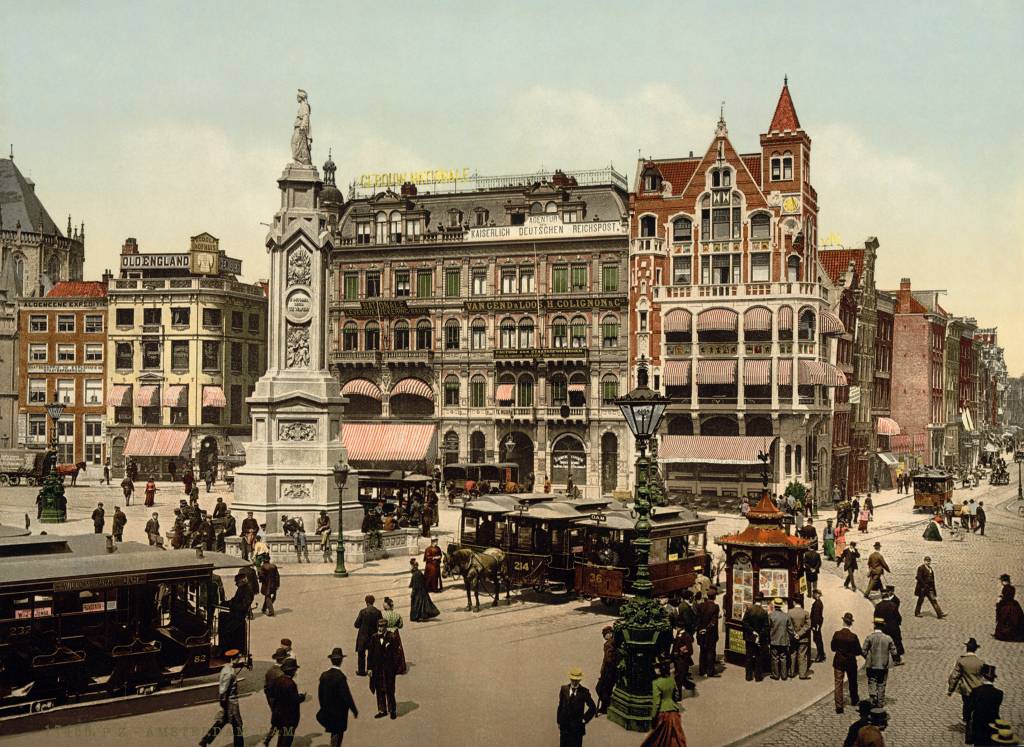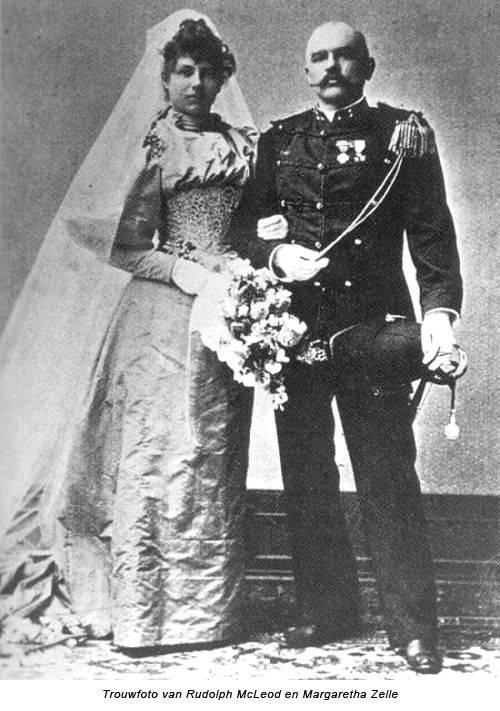By Rebekah Villon
Behind the Veils: Revealing Mata Hari
Heady Days in Amsterdam
Captain MacLeod came from a good family and enjoyed wealth and high social standing in Amsterdam at the end of the 19th century. He was a descendent of the MacLeods of Skye and the son of a Baroness, and the Netherlands was in the first prosperous blush of the industrial age. The Rijksmuseum, Concertgebouw, and Stadsschouwburg had revived the city's cultural entertainment, there was a world exhibition in 1895 on the Museumplein, and Margreet threw herself into all of it. She enjoyed the fashionable clothes and lush lifestyle she could now afford, and with her quick wit and good humor, she was well liked and popular in society.
With this popularity came the first hint of trouble in the marriage. Rudolph, who had initially been attracted to Margreet's open sexuality and flirtatious nature, was a jealous husband. He frequently became angry and accused her of behaving inappropriately.
In January of 1897, the couple welcomed a son, Norman-John MacLeod. And just a few months later, the family boarded a ship for the Dutch East Indies, where Captain MacLeod was stationed.
The Sea Crossing
The couple traveled to Malang on the SS Prinses Amalia. This trip might not be worth mentioning, except that it was apparently on this journey that Margreet learned that she had contracted syphilis, presumably from her husband, and that they had passed the disease on to their infant son.
At the time, medical treatment for syphilis consisted of giving mercury, a treatment that we know today is toxic, and arguably worse than the disease.
Life in Indonesia
While building a new life in Java, the marriage continued to deteriorate. Rudolph openly kept a mistress, which was accepted practice at the time, but did not hesitate to berate and humiliate his wife, even in public. In private, he beat her, and she once wrote that he had threatened her with a knife. He blamed her for his lack of advancement, although the real cause was likely his reputation (originated long before they met) as a drunk and occasionally violent man. They were separated often, as he was assigned to different posts in Indonesia, and once she left him to stay with another man for a few months. Every time they separated, he cut her off from all financial support, once going so far as to write to all the shopkeepers instructing them to refuse her credit.
Perhaps to distract herself from her unhappiness, and certainly out of genuine curiosity, Margreet sought to learn more about the local culture of the islands where she was living. She always had a gift for languages, and learned local words and customs, and was particularly interested in Javanese forms of dance, which she began to study. It was here that she learned the Malay words “mata hari”, a reference to the sun meaning “eye of the day.”
From Indonesia, in a letter home to family in the Netherlands, she signed her name as Mata Hari, the words that would later come to define her.
A Tragedy in the Family
By 1899, despite the abuse and frequent separations, she had given birth to a second child, daughter Louise Jeanne MacLeod. One day, both children fell violently ill. Despite the interventions of the doctor, Norman-John died, and Louise barely survived.
The cause of the illness remains a mystery. Local rumor, reinforced by Margreet herself, was that their nurse had poisoned the children. Presumably, she had been prompted to do it because her lover, a young local man, had been violently beaten by MacLeod some time before for reasons unknown. It was said that poisoning the children was an act of revenge.
While both children were sick, it seems that what actually killed the boy was an overdose of mercury, prescribed by an inexperienced doctor. In fact, some speculate that the children were sick due to complications from syphilis, and the story of poisoning was intended to conceal the real source of their illness. The true cause remains a mystery – if it was syphilis, why were both children so suddenly struck ill at the same time? If it was poisoning, why did the doctor administer mercury?
Separation and a Return to Poverty
In 1902, the family returned to the Netherlands and almost immediately separated. Margreet was given custody of Louise, but despite an order to do so, Rudolph never paid any support. Alone and penniless, she found it difficult to care for her daughter. Reasoning that, while her husband had been cruel and abusive to her, but had always been a good father, Margreet frequently left Louise with her ex-husband for extended periods of time, as she searched for means to support herself.
Seven years of marriage had brought Margreet back to where she had begun, living in poverty, with no prospects, in the Netherlands. But now she had a daughter she loved, and two names she would carry for the rest of her life: MacLeod, and Mata Hari.
Join me in the next issue of HOWDO as we continue to explore this fascinating Dutch woman at the turning point of European history.



